- Premium features included
- No hidden costs or usage limits
- Scale from startup to enterprise

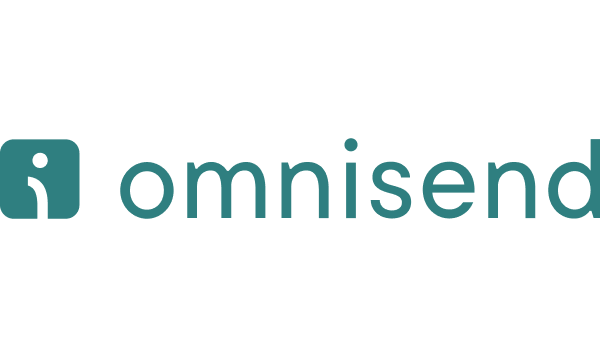
After testing Omnisend across multiple stores for three months, I discovered why 100,000+ merchants choose this platform despite its limitations. The pre-built automation workflows genuinely save hours of setup time, while the surprisingly generous free tier removes barriers for startups.
But here’s what the marketing material won’t tell you: deliverability averages just 64%, and performance degrades noticeably above 50,000 contacts. Ultimately, for stores under that threshold without a full marketing team, Omnisend delivers a practical balance of capability and simplicity—though it comes with trade-offs worth understanding.
Omnisend is an email marketing software built specifically for ecommerce, founded back in 2014 by Rytis Lauris and Justas Kriukas.
It’s not like Mailchimp or other general-purpose tools—this one’s made for online retailers, connecting directly with Shopify, WooCommerce, BigCommerce, and other major ecommerce platforms. Ecommerce marketers especially tend to gravitate toward it because it speaks their language.
You get email campaigns, SMS messaging, push notifications, and automated workflows all in one dashboard. What makes it stand out is how it integrates with your product catalog — you can pull live inventory data, create dynamic product recommendations, and track the exact revenue from each campaign.
With pre-built workflows for abandoned carts, welcome series, and post-purchase sequences, Omnisend targets small to mid-size ecommerce businesses who want professional marketing automation without the technical headaches or enterprise pricing.
Omnisend’s email campaign management does more than just schedule and send. What I found interesting is that segments update in real time before each send, so any last-minute list changes are automatically included—super helpful for flash sales or urgent updates. You can save campaigns back to drafts if they haven’t started, but once they’re live, you can only pause them—there’s no resume option.
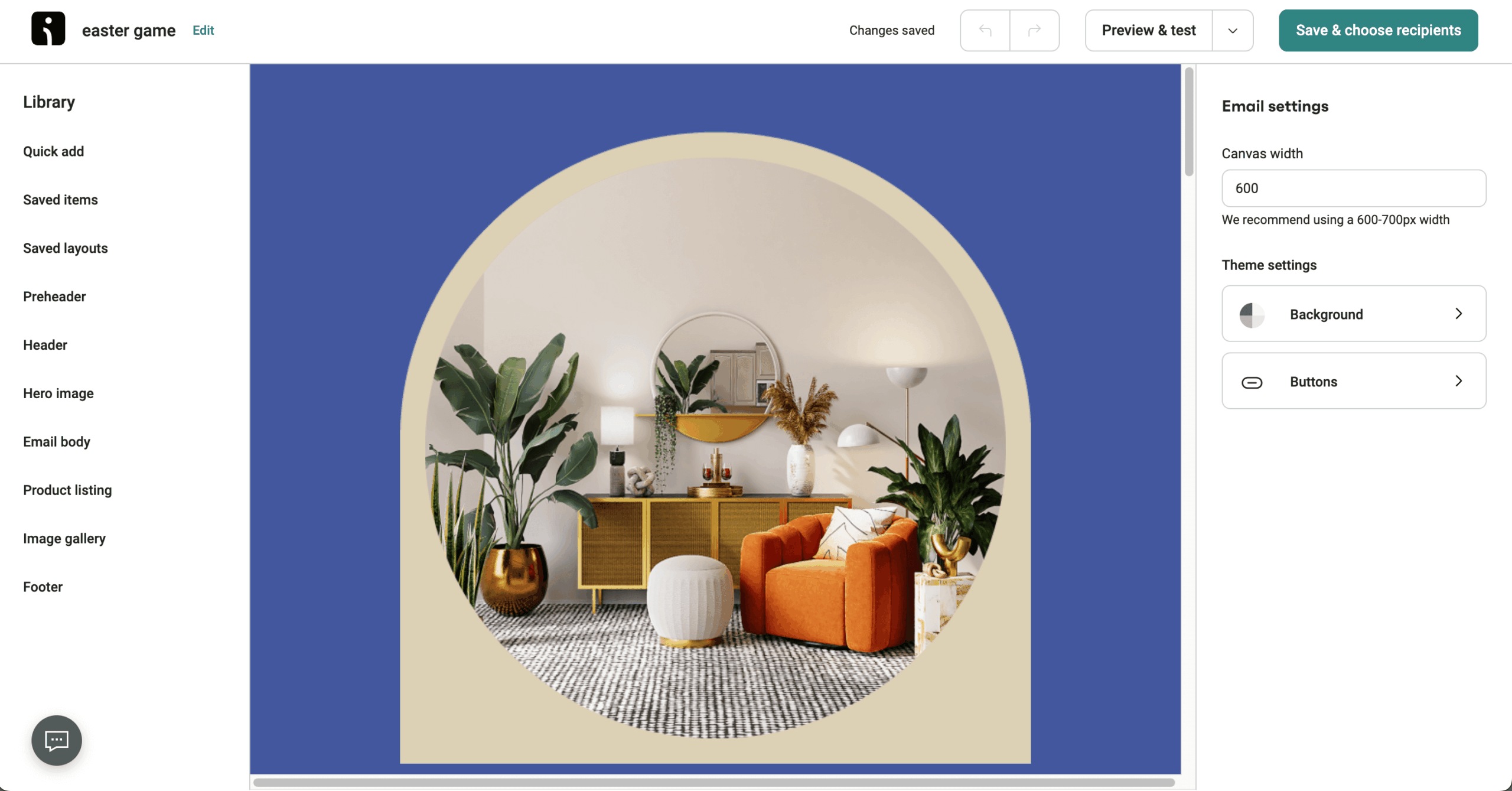
The email builder finds a nice middle ground between simple and capable. You’ve got 250+ responsive templates to choose from, then you can customize them with the drag-and-drop interface, toggle visibility per device, and save templates you can tweak for each campaign. Your store’s logo, colors, fonts, and social links pull in automatically for consistent design.
The Omnisend Product Picker is pretty slick—you insert products directly from your store (image, price, link) into campaigns or automations, though WooCommerce and Wix stores can’t use it yet. There’s a “Quick Add” panel for blocks you use often, which saves time.
Fair warning though: buried custom HTML or nested tables can mess up mobile or Outlook rendering—testing is still important if you want everything pixel-perfect.
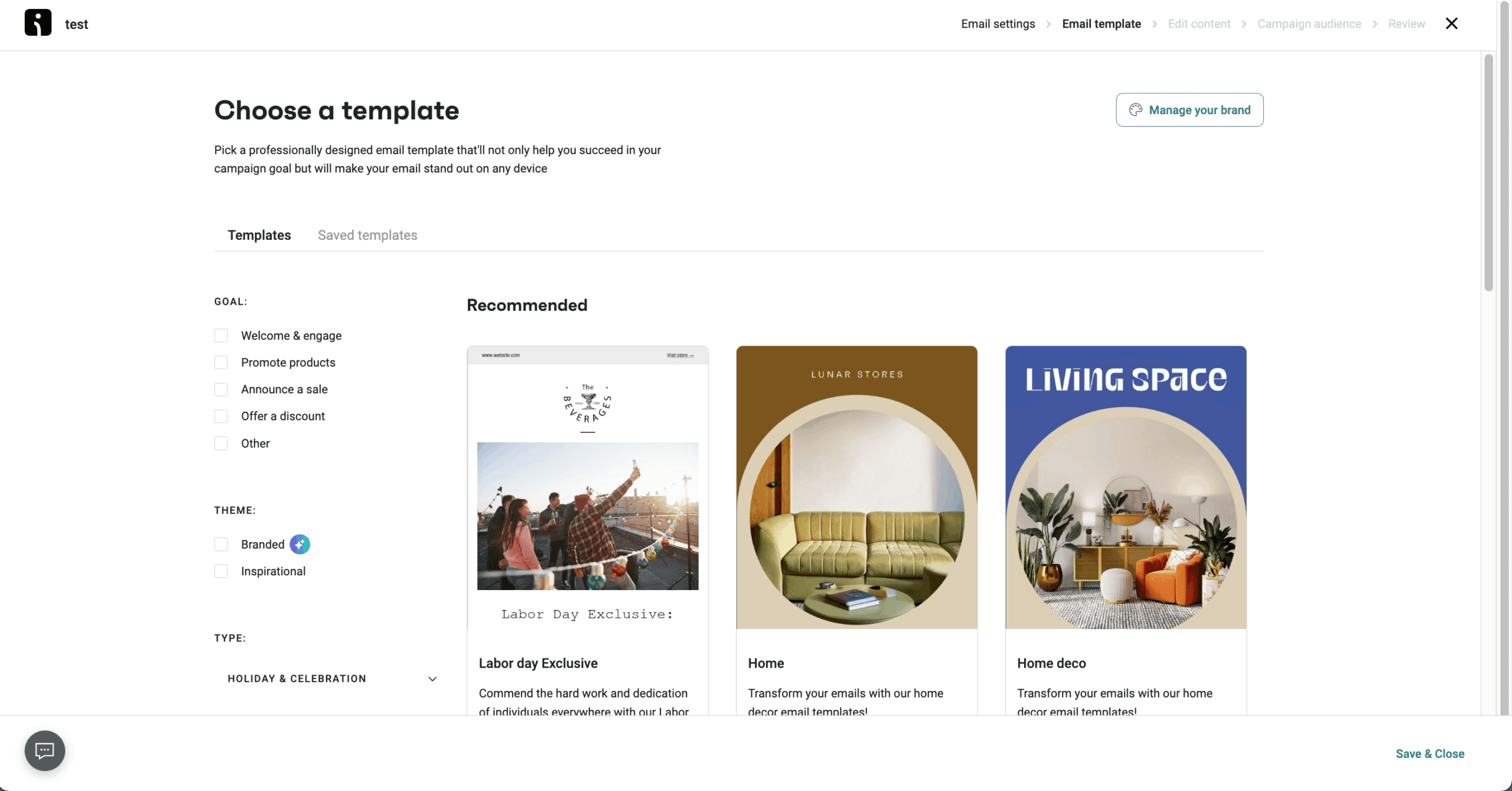
Omnisend’s A/B testing is decent. You can experiment with subject line, sender name, sender email, or full email content, with up to two variants (A and B) and then automatically send the winner to the rest—winners can be decided based on open or click rates, and you choose how long to test, from 1 hour up to 7 days (24 hours recommended).
You can pause and even resume the test within seven days if needed. Advanced users appreciate how well this aids rapid iteration. Just note, it’s limited to campaigns—not automation workflows—but automation workflows do support a different kind of A/B split block to test paths or timing.
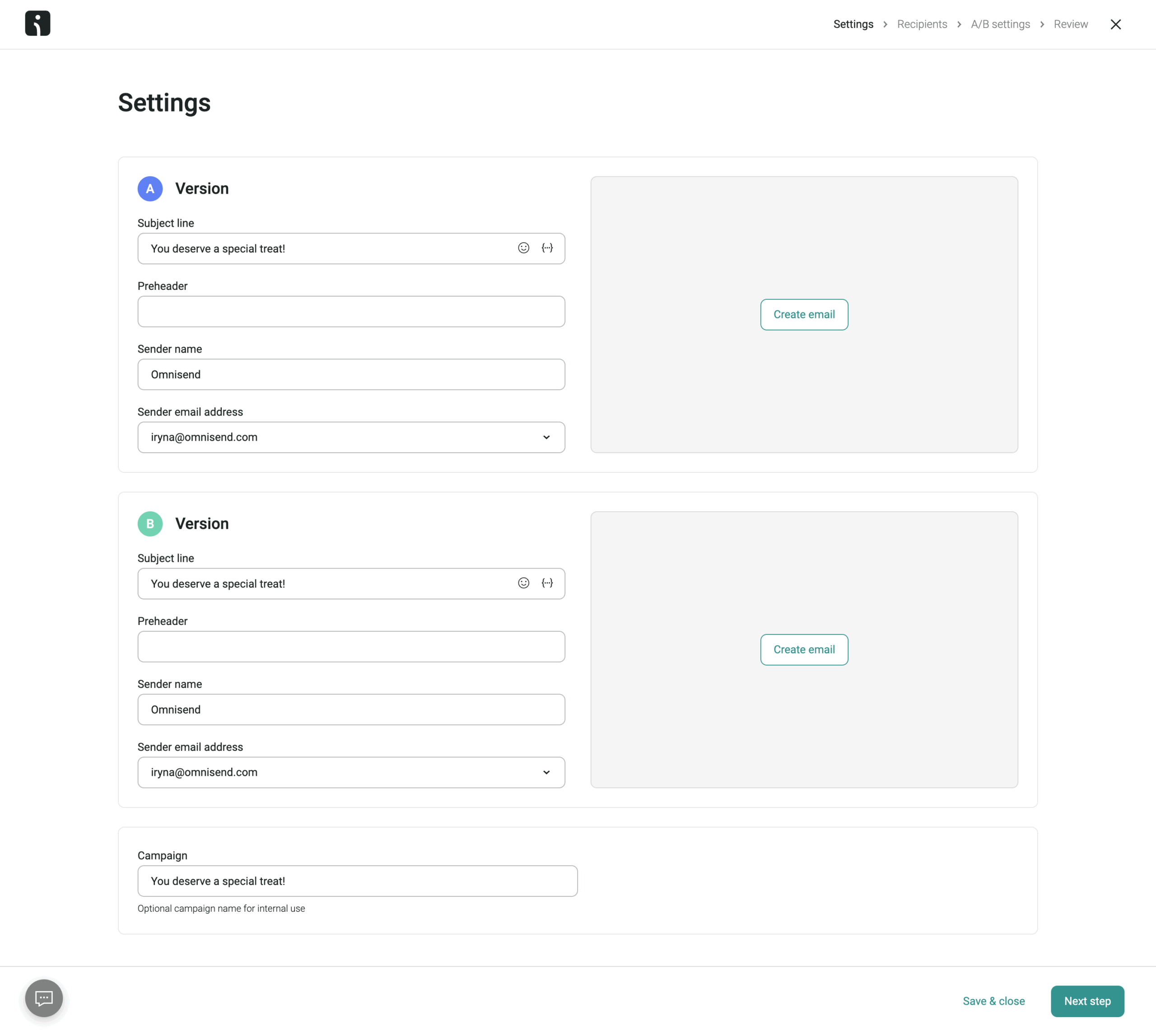
Omnisend’s marketing automation lets you visually map customer journeys with rich triggers (form sign-ups, tag changes), filter conditions, exit criteria, and customizable delays (down to specific minutes, day-part, or weekdays). You get tight control over timing and flow behavior. It handles flow actions like sending email and SMS messages, waiting periods, moving contacts between segments, or halting sequences—making it adaptable for B2B or SaaS, not just commerce.
There’s a clean Automation Report tab where you can slice performance by workflow, with metrics on engagement, sales, and deliverability—great for optimizing complex flows. This kind of advanced automation rivals what bigger ESPs offer but in a simpler package.
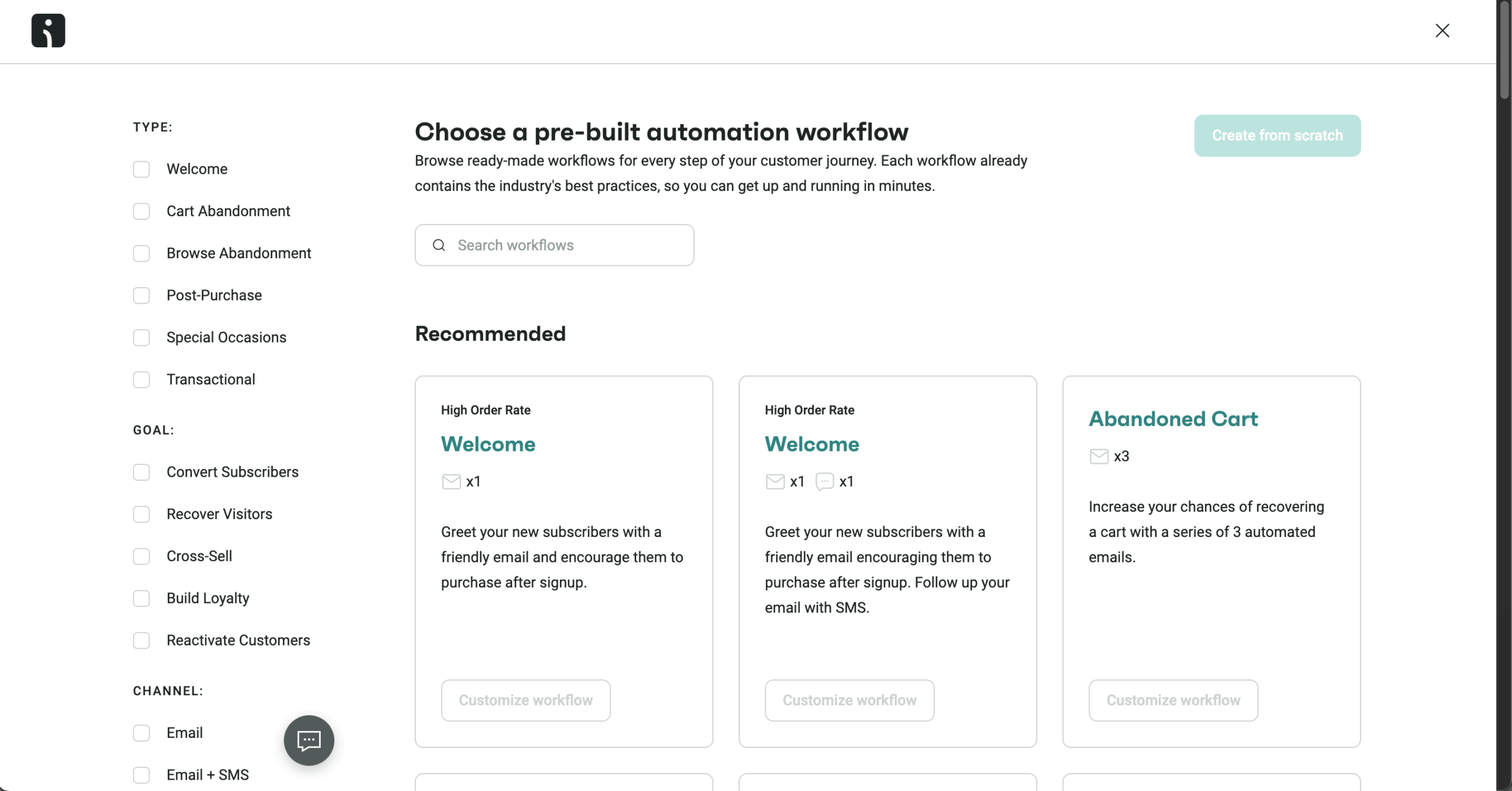
The platform shines with ecommerce automation. You get ready-made workflows for cart abandonment, browse abandonment, product abandonment, order confirmations, cross-sells, Omnisend upsell automation, and shipping updates—all triggered directly from store activity across Shopify, WooCommerce, BigCommerce, and custom API setups.
The system picks up viewed or abandoned products and auto-inserts them via Product Abandonment or Cart workflows to boost relevance. You can mix email, SMS, and push notifications in one flow—ideal for multi-channel recovery strategies.
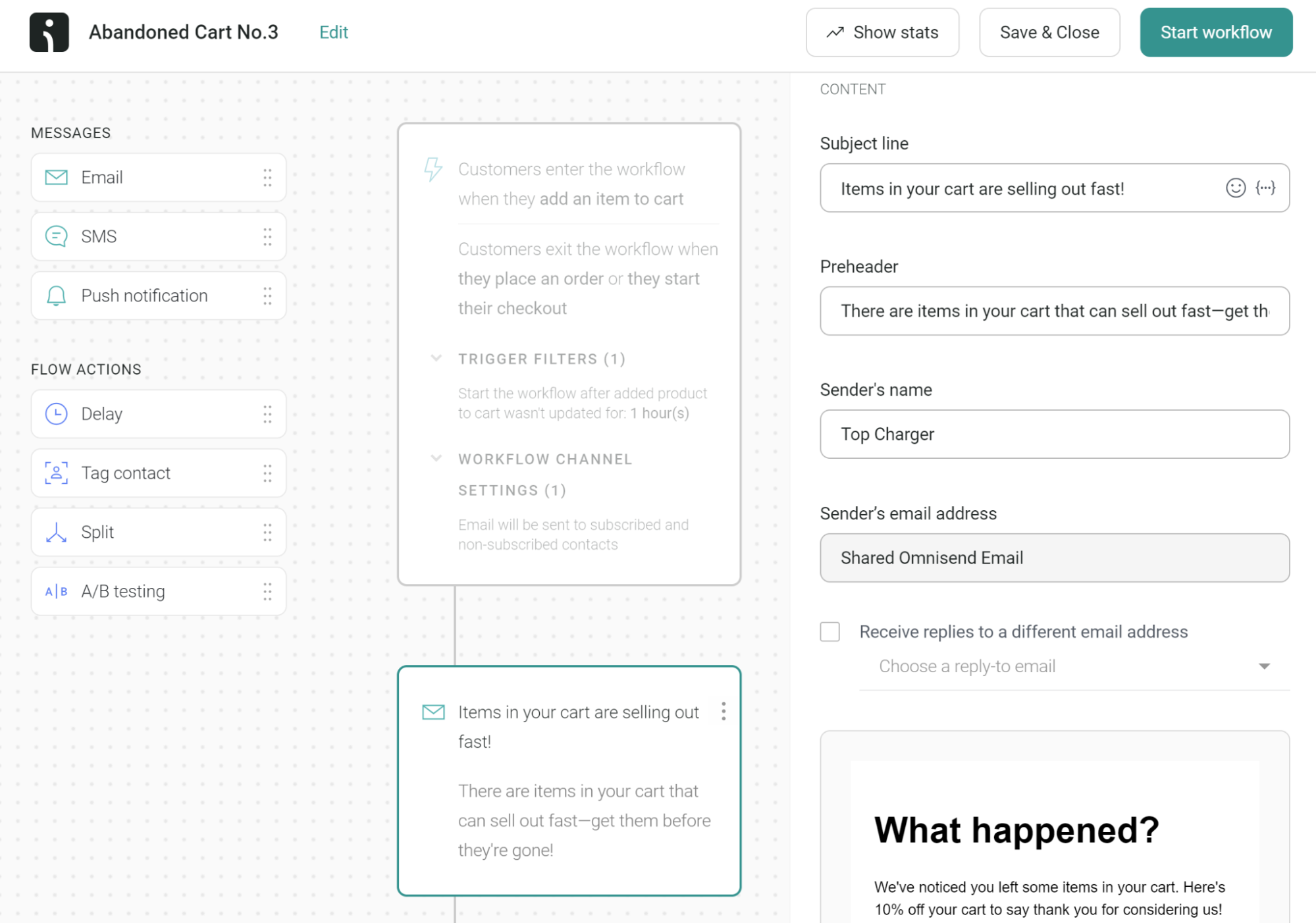
Some users run multiple Omnisend accounts to separate regions or brands, but everyone benefits from the same automation engine.
One thing to watch: browse-abandon triggers only work if the shopper was identified beforehand, and overlap between multiple abandonment workflows means you’ll want exit conditions (like “cart started” or “order placed”) to avoid flooding users with redundant messages.
Omnisend shines in omnichannel marketing by letting you drag email, SMS, and web push into a single automation workflow—including pre-built sequences—so your messaging stays coordinated and impactful across channels.
Marketers using three or more channels in one campaign see up to 494% higher order rates, and including SMS boosts conversions by over 400% compared to single-channel campaigns. Plus, Omnisend gives you a unified view of performance across channels to help optimize engagement and ROI.
Just note: web push has browser/device quirks, like no support on iOS and inconsistent icons across browsers—so testing is key.
The platform treats SMS as a first-class channel—you can embed SMS steps into automation flows alongside email and push. Brands can run dedicated SMS campaigns or broader SMS marketing campaigns, making Omnisend work like a full SMS marketing platform rather than just an add-on. Personalized messages keep customers engaged and often drive more sales than single-channel strategies.
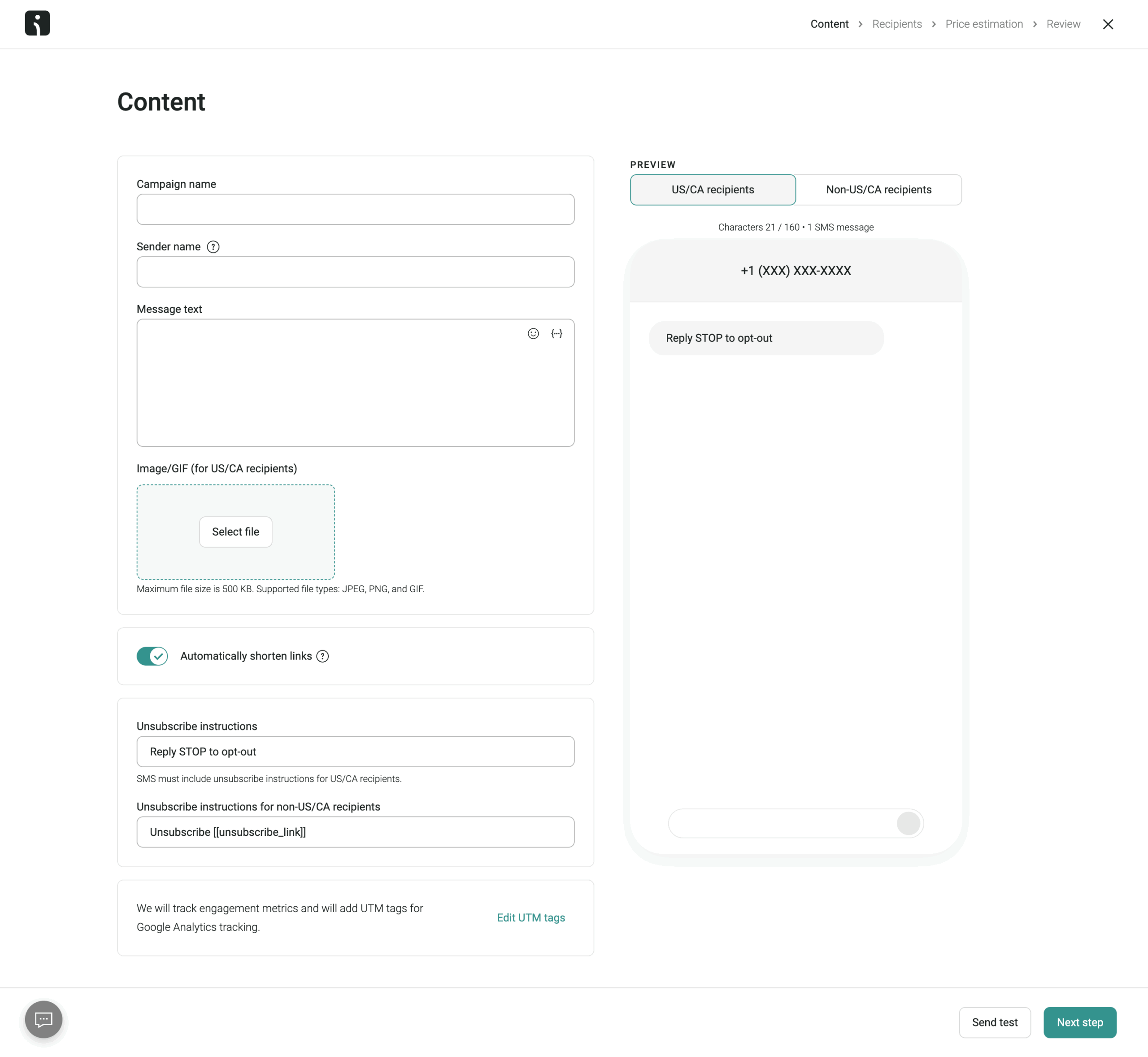
On the Pro plan, you get monthly SMS credits equal to your subscription cost (so $59 in credits for a $59/month plan). Messages are personalized and timezone-aware, and Omnisend handles compliance and automatic opt-outs right out of the box.
Watch out though—message length and character encoding matter. Going over 160 GSM or 70 Unicode characters splits the message into multiple credits, which can increase costs fast.
The platform gives you plenty of form types—popups, embedded forms, and fun elements like the wheel-of-fortune gamified form. You can target visitors by page, behavior, exit intent, UTMs, or device, giving you control over when and where signup forms appear.
A/B testing for popup forms is a standout feature, letting you compare copy, visuals, triggers, or even single vs multi-step versions to boost sign-ups. Pro tip—teasers (like a small bar or icon before the popup) don’t count as form views in A/B test metrics, so plan experiments accordingly.

Omnisend’s landing page is built into the Forms tool, so you can convert popups into full pages or start from a landing-page template—no developer needed.
You can adjust layout width (300–1000 px), add background images, schedule start/end dates, and set up custom success or “already subscribed” messages—but A/B splits aren’t native, so you’ll need to duplicate and compare manually if you’re experimenting. Landing pages are mobile-responsive, shareable via social links, and integrate with your signup workflows for seamless automation.
The platform’s subscriber management tools are straightforward but flexible enough for scaling brands. You can import contacts via CSV, Omnisend API integration, or direct ecommerce syncs, with automatic deduplication to prevent list bloat.
Omnisend segmentation is both capable and responsive. Conditional segments—like “placed order” or “viewed product”—update almost instantly, usually within a minute of the event syncing from your store. You can layer complex rules—including custom properties, behavioral filters, AND/OR logic, geolocation, and date windows—to create precisely targeted audiences.
In automation, segment-based triggers let workflows fire when someone enters or exits a segment, offering exceptional ecommerce personalization without manual work.
Pro tip: highly complex or large segments might slow down the UI, so creating reusable “master” segments is smart for efficiency.
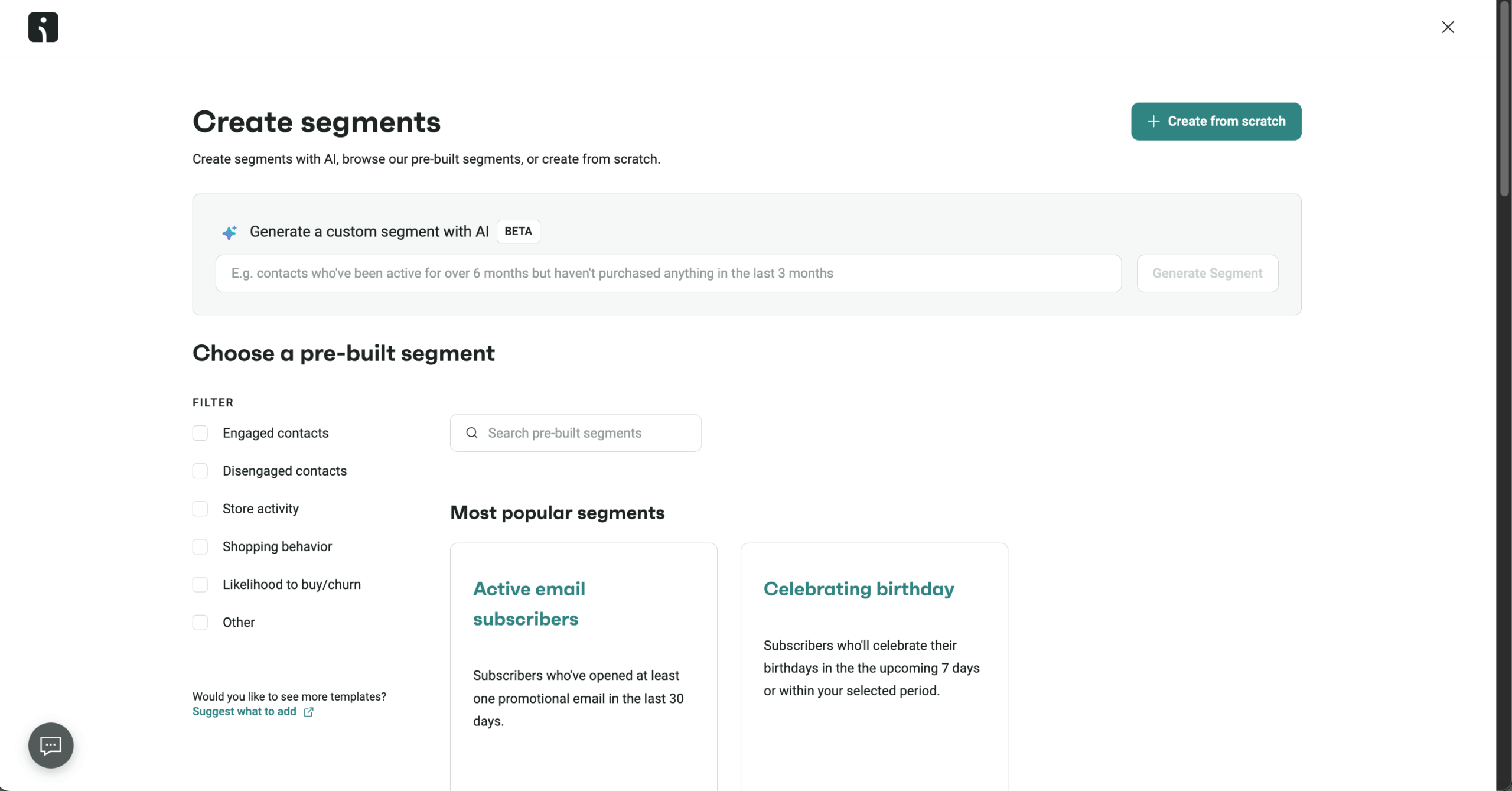
Omnisend’s Customer Lifecycle Map gives you a visual breakdown of shoppers by stage—from “Recent” to “At-risk” and “About to lose”—based on store-wide averages for recency, order frequency, and value, or brand-specific benchmarks when you have enough returning customer data (≥5–7%). You can click into any stage to view contacts or save them as segments—and even get tailored customer retention tips per group.
In practice, this helps marketers prioritize automations like VIP offers or win-backs without manually crunching numbers. Just note: accuracy improves with richer order history.
The platform offers a broad integration ecosystem with 160+ tested apps, including native plugins for Shopify, WooCommerce, Wix, and more—making store connections smooth and reliable.
Developers can also set up custom events—like “wishlist back in stock” or “order shipped”—and trigger automations via API or JavaScript, unlocking deep flexibility beyond default triggers.
The platform also supports webhooks, letting you send automation data to your CRM or internal systems in real-time. Webhooks in Automations are currently in Beta and can be enabled upon request.
That said, if you’re coming from enterprise B2B tools, integrations with broader CRMs like Salesforce or HubSpot require Zapier or manual API work—no out-of-the-box direct plug‑in there.
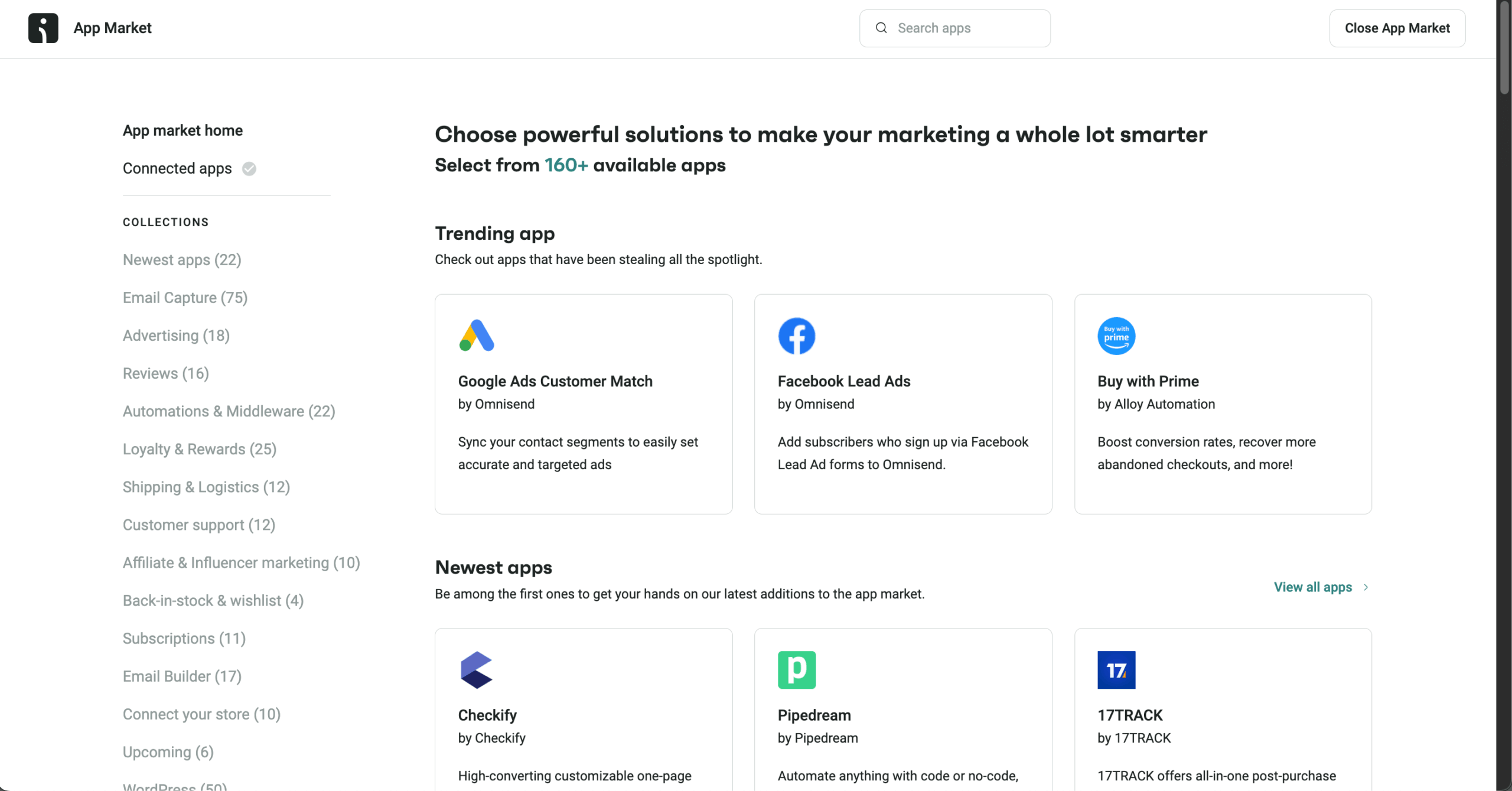
The platform provides deep, ecommerce-focused analytics, including product-level revenue, orders, conversion, email deliverability optimization insights, and sales attribution for each campaign or automation. You don’t just get open and click metrics but dollar-driven insights too. You can compare performance across email, SMS, and push, including full historical data ranges, adjustable attribution windows, and retention metrics like forms and list growth streaks.
Automation reporting dives deep into workflow engagement, placed orders, revenue per placed order, even with performance trend comparisons. For marketing leaders or a marketing manager reviewing performance, sales attribution makes ROI transparent.
One limitation: Cohort analysis or predictive insights aren’t built-in—you’ll need to export via API or third-party tools for advanced BI-style reporting.
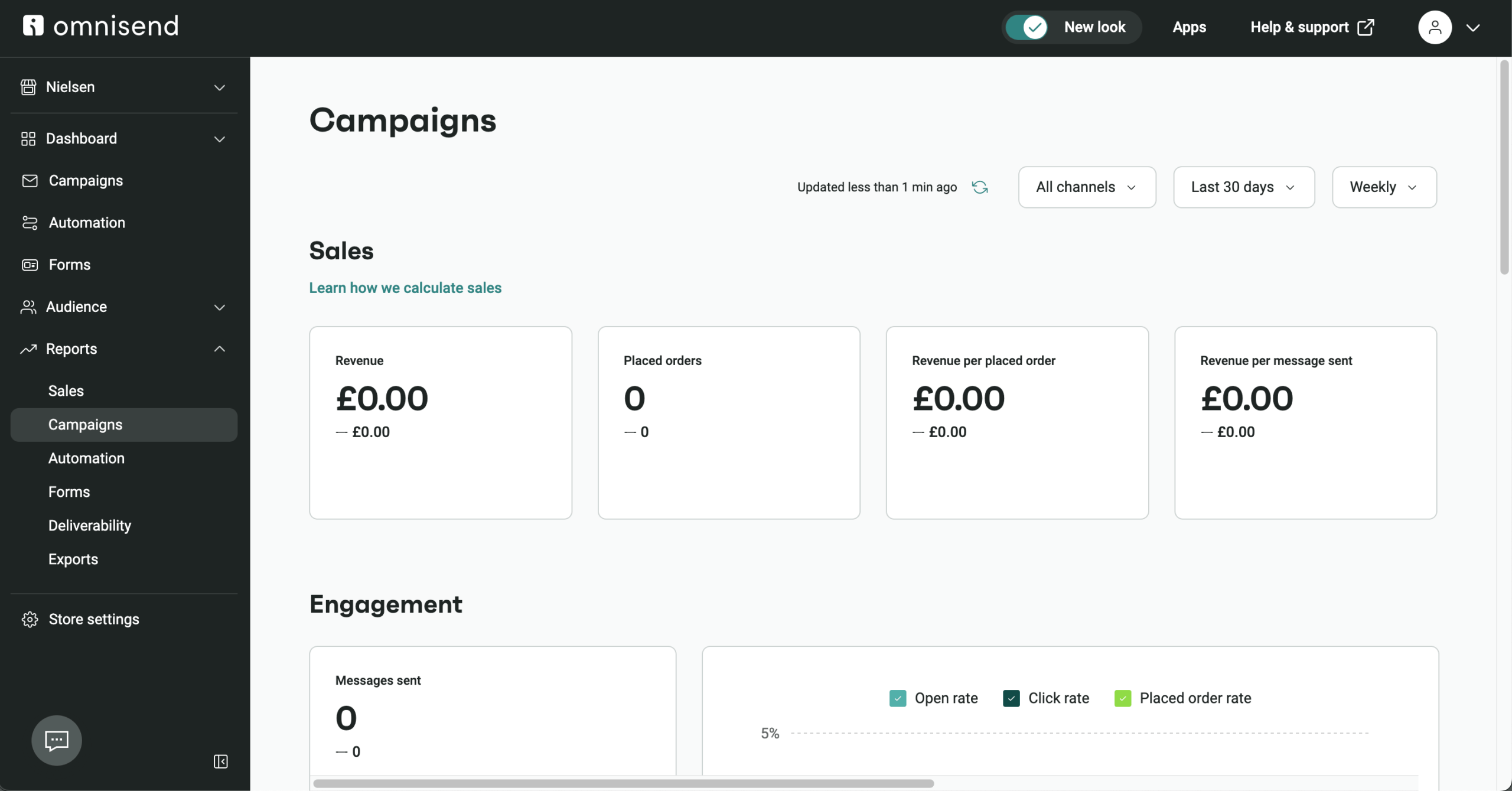
The platform handles deliverability in ways that aren’t immediately obvious. When you’re warming up a new sending domain, your emails split between your domain and Omnisend’s shared domain—but only for the first campaign you send each day. Later campaigns that day go fully through the shared domain, and features like A/B testing or Campaign Booster get temporarily disabled.
You can request a dedicated IP, but it only makes sense if you’re consistently sending 300k+ emails weekly. Deliverability reports get more advanced once you have 5,000+ subscribers, letting you pull in Google Postmaster spam/reputation data.
Here’s another quirk: any hard-bounced address gets automatically unsubscribed to protect your reputation. If inbox placement matters to you, platforms like Sender consistently hit higher deliverability rates for less money.
The platform delivers standout support with true 24/7 live chat and email support, available even on the free plan—uncommon for ESPs and great for quick troubleshooting any time of day. Their Help Center and Omnisend Academy provide thorough documentation, tutorials, and workshop recordings for self‑paced learning. The support team also helps with WordPress site integrations, ensuring merchants outside Shopify or WooCommerce can still use Omnisend effectively.
For merchants spending $400/month or more, a dedicated Customer Success Manager (CSM) is included, offering personalized guidance and performance reviews.
The one nuance: some Omnisend user feedback highlights that while live support handles most tasks quickly, complex issues like bespoke migrations or deep deliverability problems can require escalation and take longer.
Free
Standard
Pro
$0 Forever free
From $16 per month
From $59 per month
The platform integrates seamlessly with major ecommerce platforms like Shopify, WooCommerce, and BigCommerce, syncing product data in real-time without complex setup. It unifies email, SMS, and push notifications in one dashboard, so you don’t need multiple marketing tools.
Pre-built automation workflows for Omnisend abandoned cart recovery, welcome series, and post-purchase sequences deliver immediate value with minimal configuration. Revenue tracking directly connects each campaign to actual sales, providing clear ROI metrics that help drive more sales.
The ecommerce personalization engine pulls live inventory for dynamic product recommendations based on browsing behavior. With 24/7 live chat support averaging 4-minute response times, even free plan users get help when they need it.
The platform works great for ecommerce, but it’s not as versatile outside online retail, so B2B or content-driven marketers might feel limited. Its drag-and-drop template editor, while fast and user-friendly, can feel restrictive if you’re after pixel-perfect or highly custom designs.
Analytics lean ecommerce-first, offering sales attribution and revenue tracking but missing deeper BI features like cohorts or predictive modeling—something data-driven teams might want.
Compared to ActiveCampaign, Omnisend’s CRM integrations are fewer, and while SMS is capable, credits cost extra and can add up quickly at scale. Finally, there’s no phone support option, which can be frustrating when urgent issues come up.
Perfect For
Look Elsewhere If You’re
Ecommerce Shops
Especially on Shopify, WooCommerce, or BigCommerce
B2B Marketers
It’s missing the CRM connections and sales funnel tools you need
Small to Midsize Online Retailers
Get multichannel marketing without breaking the bank
Content Creators or Bloggers
It’s built for product sales, not content strategies
Newbie Ecommerce Email Marketers
Templates and workflows make it easy to hit the ground running
Enterprise Teams with Complex Analytics Needs
You’ll want more detailed reporting
Omnisend is ideal for Shopify, WooCommerce, or BigCommerce stores doing $100K-$5M annually with 500-25,000 subscribers. It’s perfect for solo entrepreneurs or small teams (1-5 people) without technical expertise who need professional email marketing that actually works.
If you prioritize quick setup over advanced features, want unified email and SMS without complexity, and need to show clear ROI from marketing spend, Omnisend delivers. The platform especially suits businesses selling physical products with straightforward customer journeys who want proven automation templates they can activate immediately. The user-friendly interface makes it accessible to non-technical users.
Skip Omnisend if you’re a B2B company needing lead scoring, CRM integration, or complex sales funnels. Enterprise brands requiring predictive analytics, custom reporting, or managing 50,000+ contacts will quickly outgrow the platform’s capabilities.
Agencies juggling multiple clients, businesses needing extensive third-party integrations, or companies with dedicated marketing teams expecting advanced features should also look elsewhere.
If deliverability is critical (financial services, B2B), the 75-80% inbox rate won’t suffice. Sender is a strong contender here, offering consistently better deliverability and budget-friendly scaling.
On G2, many users highlight Omnisend’s ease of use. One reviewer praised its smooth Shopify integration and drag-and-drop editor, describing it as a “breath of fresh air” for ecommerce teams. Another noted it’s perfect for growing audiences and running automated campaigns, saving time, though they wished for custom domains on landing pages.
However, not all feedback is glowing. A WooCommerce user warned that copying a staging site into production broke their automations, suggesting Omnisend isn’t always reliable with certain ecommerce setups.
On Trustpilot, Omnisend reviews often praise its accessibility for small businesses, with one user recommending it for its helpful support and fair pricing. Another reviewer liked how easily it connects with WooCommerce, especially appreciating automations and dynamic discount codes, though they’d like image previews in inbox tests.
But there are also negative experiences. One complaint accused the platform of enabling spammy, non-GDPR-compliant emails, calling into question how strictly Omnisend enforces compliance among its users.
On Reddit, ecommerce owners tend to speak highly of Omnisend. One Omnisend review described it as a “game-changer,” especially for automations and omnichannel marketing, making it easier to unify SMS, email, and push campaigns. Another thread featured users switching from Klaviyo, with multiple voices saying “couldn’t recommend it more” and that migration was smooth with agency support.
Still, not everyone is satisfied—one frustrated customer on a Pro plan called Omnisend “very buggy” with the worst support they’d experienced, pointing to deliverability and customer service concerns.
Omnisend is email marketing software built for small to mid-size ecommerce stores that value simplicity. It unifies email, SMS, and push campaigns, offering strong ROI features like personalized messages and sales attribution.
With integrations spanning Shopify, WooCommerce, BigCommerce, and even the Shopify App Store, the platform connects merchants directly. For anyone comparing marketing tools, Omnisend offers affordability, automation, and enough features to compete with larger ESPs.
The platform works best for online retailers—it’s less suited to B2B or content creators but a solid option for ecommerce teams wanting steady growth. Deliverability hovers at 75–80%, analytics lack advanced depth, and design flexibility can feel limiting. If affordability and higher inbox rates matter more to you, Sender is often the smarter choice.
Omnisend vs. Mailchimp
Omnisend specializes in ecommerce with pre-built cart abandonment workflows and native product catalog integration, while Mailchimp has broader multi-purpose tools. Omnisend gives you clearer pricing and better automation efficiency for ecommerce stores. Go with Mailchimp for design flexibility and non-retail versatility; pick Omnisend for focused ecommerce features and superior revenue tracking.
Omnisend vs. Klaviyo
Klaviyo has advanced predictive analytics, unlimited segmentation, and superior deliverability, but costs nearly double. Omnisend wins on ease-of-use, faster support (4 minutes vs 24 hours), and affordability. Choose Omnisend for simple automation under 25,000 contacts; go with Klaviyo for data-driven marketing at scale.
Omnisend vs. ActiveCampaign
ActiveCampaign provides full CRM functionality, lead scoring, and 870+ integrations versus Omnisend’s 130+. Omnisend excels at ecommerce-specific features with easier setup and native product synchronization. Pick ActiveCampaign for B2B or complex sales cycles; choose Omnisend for straightforward ecommerce marketing without CRM needs.
Yes, the platform works really well for small ecommerce businesses, particularly those on Shopify, WooCommerce, or BigCommerce doing under $2M annually. Omnisend’s free plan supports 250 contacts with full automation features—unusually generous.
Setup takes just hours, not weeks, with pre-built workflows delivering immediate results. The intuitive interface requires zero technical knowledge, and 24/7 support helps even free users.
It’s only suitable for product-based businesses though. Service companies, B2B, or content creators should look elsewhere. SMS costs can unexpectedly double your monthly bill, so keep an eye on usage. For small online stores prioritizing simplicity over advanced features, Omnisend offers exceptional value.
Absolutely—the platform has specialized features designed specifically for ecommerce business needs. It excels at online store marketing with native product catalog integration, automated customer retention workflows, and built-in ecommerce personalization tools.
For small ecommerce business owners, the drag and drop interface makes creating professional marketing campaigns accessible without technical expertise.
The platform’s focus on ecommerce conversion rates shows in every feature, from the Omnisend Product Picker that pulls live inventory to sales attribution tracking that connects every email to revenue. No wonder so many ecommerce stores rely on the platform to scale their sales.
Based on my testing, Omnisend’s inbox placement varies but typically falls below premium competitors. This can significantly impact campaign ROI, especially for businesses where every email counts.
Yes, Omnisend provides GDPR compliance tools, including double opt-in forms, consent checkboxes, data portability exports, and right-to-deletion features. The platform stores data in EU-approved data centers and includes Data Processing Agreements (DPAs) for all accounts. Subscribers’ consent status gets tracked automatically, and you can segment based on consent types.
Compliance ultimately remains your responsibility though. Omnisend provides the tools, but you need to implement proper consent collection, maintain records, and handle data requests. Some users report the consent management interface is clunky, requiring manual updates for complex scenarios.
The platform lacks automated data retention policies too—you have to manually delete old data to maintain compliance.
